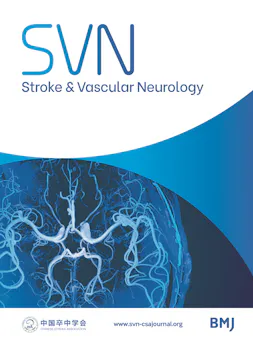Design of trials in lacunar stroke and cerebral small vessel disease: review and experience with the LACunar Intervention Trial 2 (LACI-2)
IF 4.9
1区 医学
Q1 CLINICAL NEUROLOGY
引用次数: 0
Abstract
Cerebral small vessel disease (cSVD) causes lacunar stroke (25% of ischaemic strokes), haemorrhage, dementia, physical frailty, or is ‘covert’, but has no specific treatment. Uncertainties about the design of clinical trials in cSVD, which patients to include or outcomes to assess, may have delayed progress. Based on experience in recent cSVD trials, we reviewed ways to facilitate future trials in patients with cSVD. We assessed the literature and the LACunar Intervention Trial 2 (LACI-2) for data to inform choice of Participant, Intervention, Comparator, Outcome, including clinical versus intermediary endpoints, potential interventions, effect of outcome on missing data, methods to aid retention and reduce data loss. We modelled risk of missing outcomes by baseline prognostic variables in LACI-2 using binary logistic regression. Imaging versus clinical outcomes led to larger proportions of missing data. We present reasons for and against broad versus narrow entry criteria. We identified numerous repurposable drugs with relevant modes of action to test in various cSVD subtypes. Cognitive impairment is the most common clinical outcome after lacunar ischaemic stroke but was missing more frequently than dependency, quality of life or vascular events in LACI-2. Assessing cognitive status using Diagnostic and Statistical Manual for Mental Disorders Fifth Edition can use cognitive data from multiple sources and may help reduce data losses. Trials in patients with all cSVD subtypes are urgently needed and should use broad entry criteria and clinical outcomes and focus on ways to maximise collection of cognitive outcomes to avoid missing data.腔隙性中风和脑小血管疾病试验的设计:回顾和 LACunar 干预试验 2 (LACI-2) 的经验
脑小血管病(cSVD)会导致腔隙性中风(占缺血性中风的 25%)、出血、痴呆、身体虚弱或 "隐匿性 "中风,但却没有特定的治疗方法。在 cSVD 临床试验的设计、纳入哪些患者或评估哪些结果方面存在的不确定性,可能会延误试验的进展。根据近期cSVD试验的经验,我们回顾了促进未来对cSVD患者进行试验的方法。我们评估了文献和 LACunar 干预试验 2 (LACI-2) 的数据,以便为选择参与者、干预措施、比较者和结果提供信息,包括临床终点与中间终点、潜在干预措施、结果对缺失数据的影响、帮助保留和减少数据丢失的方法。我们使用二元逻辑回归法根据 LACI-2 中的基线预后变量对结果缺失的风险进行了建模。成像结果与临床结果导致的数据缺失比例较大。我们提出了支持和反对宽入选标准与窄入选标准的理由。我们发现了许多具有相关作用模式的可再利用药物,可在不同的 cSVD 亚型中进行测试。认知障碍是腔隙性缺血性卒中后最常见的临床结果,但在 LACI-2 中,认知障碍的缺失率高于依赖性、生活质量或血管事件。使用《精神疾病诊断与统计手册》第五版评估认知状况可利用多种来源的认知数据,有助于减少数据丢失。目前急需对所有 cSVD 亚型患者进行试验,试验应采用广泛的入选标准和临床结果,并关注如何最大限度地收集认知结果,以避免数据丢失。
本文章由计算机程序翻译,如有差异,请以英文原文为准。
求助全文
约1分钟内获得全文
求助全文
来源期刊

Stroke and Vascular Neurology
Medicine-Cardiology and Cardiovascular Medicine
CiteScore
11.20
自引率
1.70%
发文量
63
审稿时长
15 weeks
期刊介绍:
Stroke and Vascular Neurology (SVN) is the official journal of the Chinese Stroke Association. Supported by a team of renowned Editors, and fully Open Access, the journal encourages debate on controversial techniques, issues on health policy and social medicine.
 求助内容:
求助内容: 应助结果提醒方式:
应助结果提醒方式:


